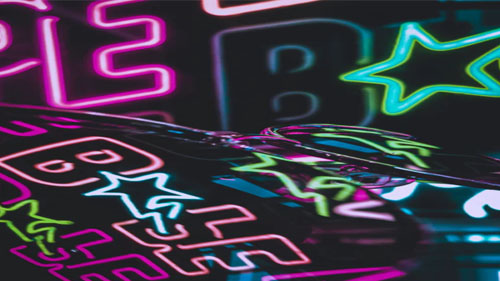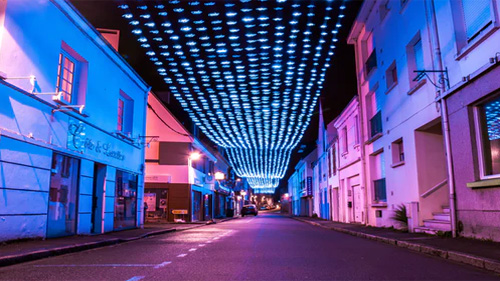
Neon Signs: Ultimate Guide to Buying Neon Signs in 2021
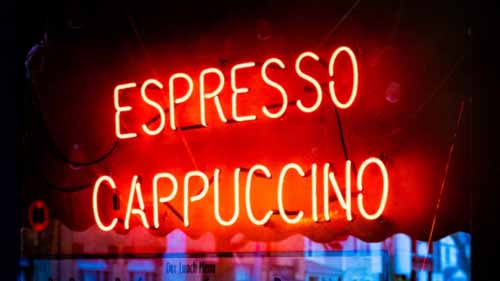
Neon signs revolutionized the art of displaying messages. They are known to bring Las Vegas to life in the night just as they do many other establishments all over the world. Even years after their invention, they still elicit interest and wander from onlookers.
If you are weighing the idea of buying neon signs, it is advisable that you have a proper understanding of them. It could help save you both time and money as you shop. Details such as the differences between traditional neon signs and LED neon lights signs could also help you make a more informed choice.
With that in mind, let us delve into all things neon signs.
Table of Contents
What are Neon Signs?
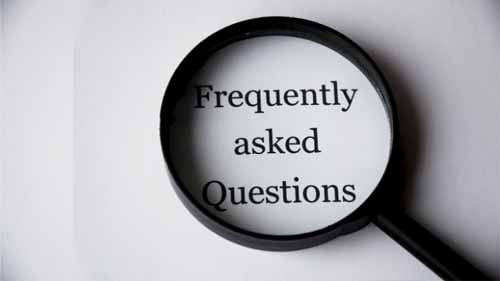
Neon signs are illuminated signs that display writings and symbols in different colors. Classic neon signs are made using glass tubes filled with inert gases such as neon and hence the name ‘neon signs’.
Who Invented Neon Signs?
1675: The discovery of the barometric light – the French astronomer, Jean Picard, noticed that whenever mercury in a glass was shaken, it discharged some light. This phenomenon was christened barometric light. It relates to neon signs on the principle that when certain atoms are activated in a vacuum, they can light up.
1902: The invention of the Claude System – the Claude system was invented by George Claude. It is a method of liquefying air that made it possible to mass-produce purer forms of inert gases.
1910: The invention of neon lighting – using the Claude system and improved vacuum systems, George Claude created the first successful neon light. His first display consisted of 40-foot neon tubes.
Types of Neon Signs
Neon signs differ based on how they are made. There are 2 main types:
- Traditional neon signs
- LED neon light signs
Traditional Neon Signs

Traditional neon signs are based on George Claude’s model. They are made of glass tubes, with an electrode on each end and filled with inert gases. The glass tubes are designed in different shapes depending on the message that is to be displayed on the sign. Different inert gases can also be used to achieve a multicolored sign.
These types of signs work as follows:
- The electrodes on the glass tubes of the sign are connected to a power source.
- When the power source is turned on, electric current flows through the electrodes to the inert gas in the glass tube.
- The gas molecules become activated by the electric current and emit light.
LED Neon Light Signs
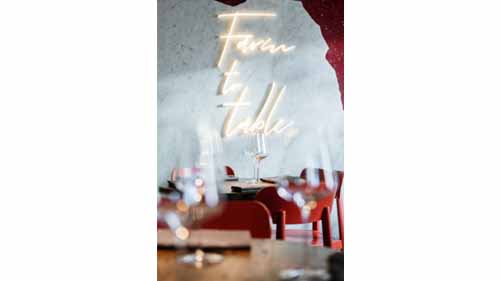
LED neon light signs look just like traditional neon signs. An untrained eye may not even be able to tell the difference. However, the two are not built the same. Instead of gas-filled glass tubes, LED neon light signs are made using flexible LED neon light strips.
The flexibility of the LED neon light strips allows for them to be bent into different letters or shapes to make a sign. Once the sign is complete, the power source of the LED neon lights is turned on and the sign lights up. RGB LED neon lights or RGBW neon lights can be used to display different colors just like in traditional neon signs.
How Long Do Neon Signs Last?

The durability of your neon sign depends on the type of neon sign you choose. The longevity of a traditional neon light sign can be divided into two aspects; the durability of the transformer and the glass tube.
The transformer – serves as the power source of the neon sign. It has a typical lifespan of about 8 to 10 years. This depends on how long the sign stays on in a day and where the sign is placed. Low usage, as well as indoor or sheltered placement, may contribute to the sign lasting longer.
The glass tube –neon sign glass tubes can last 8 to 10 years as well but they are more prone to damage. Extreme temperatures, hailstones, or heavy snowballs could break the glass. On the upside, you could repair the broken tube but it may cost you a pretty penny.
Some tips to ensure that your neon sign lasts longer include:
- Whether LED or traditional neon, invest in a quality sign made of durable components
- Have your sign installed by a professional
- Ensure that the power source is stable
- Use the flickering/blinking function in moderation to avoid electric malfunctions
- Have an expert perform regular maintenance on your sign. They should remove debris and check the wiring for any depreciation.
Applications of Neon Signs
When you need to display a message to large or small audiences, you simply cannot go wrong with neon signs. They are applicable for:
Advertising

Traditional neon signs made their debut in advertising in 1923. A car company bought them from George Claude and used them to advertise their business. The competition soon joined in the fray and since then neon lights became a staple medium of advertising.
Neon signs meet all the markers of a good advertising tool. They attract attention and can communicate a message clearly. They are also an affordable medium given as a neon sign is a one-time investment that will serve you in perpetuity.
Decoration

LED neon signs are more commonly used for this type of application. This is because they are easier to make and can be designed in different sizes. Plus, they work well for both indoor and outdoor installations.
For home decor, a neon sign can be used to accentuate a feature wall or as a cool way to minimally illuminate a space. While at events such as weddings and parties, neon signs are now a common preference for a photo area backdrop. It is also possible to use them on building facades or parks during the holidays as festive decorations displaying season’s greetings.
How Are Traditional Neon Signs Made?
Almost all traditional neon signs are custom made. The manufacturing process thus begins with designing the sign and determining its size. This is a very important step as once the glass tubes have been molded they can not be adjusted. The manufacturing process then proceeds as below.
The Glass Tubes
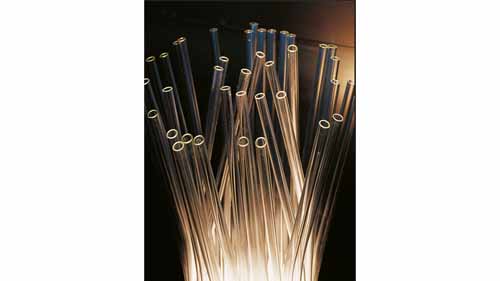
Neon signs are made using soft lead glass tubing. The glass tubing undergoes a series of steps to create the sign as needed.
- The letters/shapes for the sign are measured to scale
- Glass tubing of suitable length is cleaned and set aside
- Where necessary, coatings of phosphor or color tints applied. This is usually done if a special color effect needs to be achieved.
- The coated glass tubing is placed in an oven to dry
- The design of the sign is mapped out on a sheet of asbestos to create a stencil of sorts
- The glass tubing is then placed on each letter/shape section
- Using hand-held torches of different sizes, the glassmaker heats the glass tubing to make it pliable enough to be bent into shape. In most factories, the bending is done by hand.
The heat is usually applied where the glass tubing needs to be bent but it is conducted to the rest of the tube to prevent the whole glass tube from collapsing as it softens, air is blown into it through one of its openings. When the process is completed, the electrodes are inserted.
The Electrodes
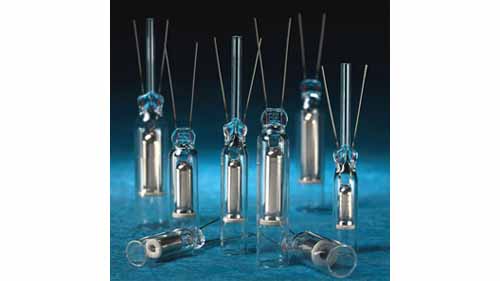
Each unique section of glass tubing has 2 electrodes. In the letter ‘A’ for instance, there would be an electrode at the end of each tail.
The electrodes used are made of pure iron and are usually encased in glass. The glass jacket is enclosed on one end and left open on the other. The open end faces the inside of the glass tubing while the other faces outside.
Each electrode has a wire that juts out at the closed end. Whereas every letter or shape is individual, they need to form a complete circuit for the whole sign to light up. To this end, each electrode is joined to the next using a GTO cable. The GTO cable then joins all of them to the transformer. The point of connection between the cable and the transformer is jacketed in heat-resistant borosilicate glass.
Inert Gas
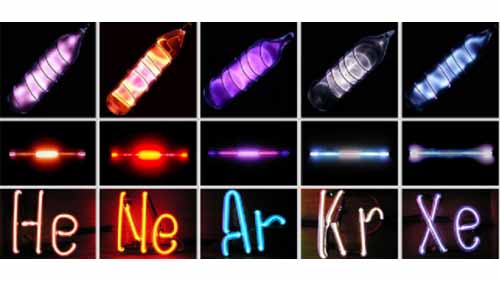
When the electrodes are in place, the glass tubing is bombarded to remove all impurities. After it cools, the inert gas is inserted through a small portal which is then sealed off. The purer the gas, the more durable and well-illuminated the sign will be.
The type of inert gas used depends on the color that needs to be displayed. They include:
- Helium - orange
- Argon - lavender/violet
- Krypton - green
- Neon- red
- Xenon - blue
The Aging Process
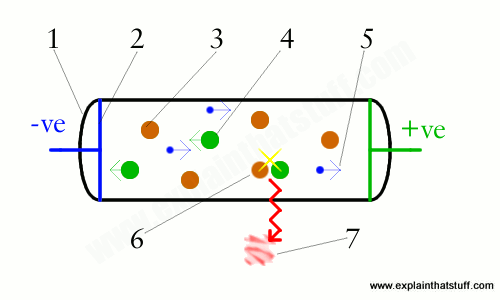
In this step, the glass tube filled with gas is heated to a set temperature. The purpose of this process is to anneal the glass and also help the inert gas settle into the tube evenly.
Testing
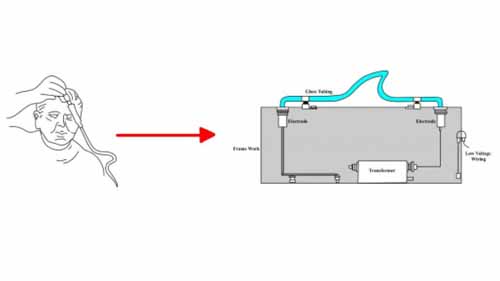
After the aged tube cools, the electrodes are connected to a transformer for testing. For it to pass the test, it has to illuminate evenly, with no sparks or dimming.
Installation
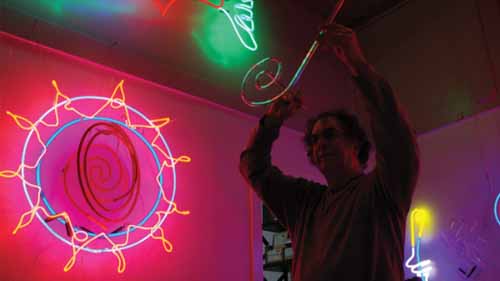
When every glass tube in a sign passes the quality test, they are joined into a circuit mounted onto a board. The sign is connected to a transformer which steps up the normal voltage of 120-220V to up to 15,000 volts to power the neon sign. In terms of current, a neon sign requires about 30-60 milliamperes.
For outdoor installations, the transformer should always be in a waterproof cabinet to protect it from rain, snow, and other elements.
How Are LED Neon Light Signs Made?
LED neon light signs are much easier to make. So much so that you can make them at home. They are made up of 3 main parts:
- LED neon flex lights
- Backboard/Substrate
- Power supply and cables
The production process begins with an illustration of the sign. It is then printed to scale to be used as a template.
Choosing LED Neon Flex Lights
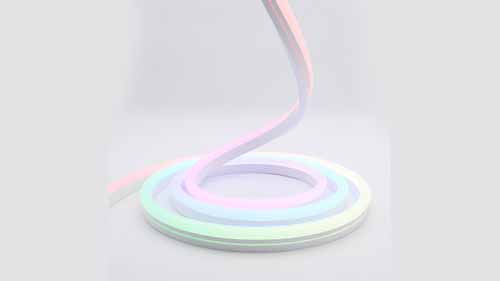
The quality of the sign is largely determined by the quality of LED neon flex lights that are used to make it. Quality brands offer features such as:
High-grade silicone encasing
Bright even lighting throughout the light strip
Radiant consistent color
Waterproof
Energy efficiency
The choice of LED neon flex lights is also determined by color. Most reputable LED neon flex manufacturers offer RGB and RGBW neon flex lights; they provide more color options increasingly in that order.
Preparing the Backboard/Substrate
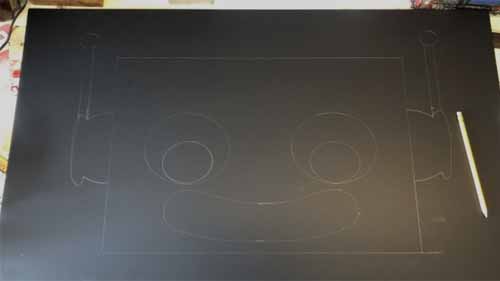
The template serves as a guide when preparing the substrate. First, the length and width of the sketch are measured. The substrate is then cut to a size big enough to accommodate both measurements. Some backboards come pre-cut which may be useful if you choose to make your LED neon lights sign at home.
Some manufacturers carve letters or shapes into the substrate while others sketch them on the surface. Either method is acceptable. The only difference is that a carved substrate enables better accuracy as the LED neon flex lights are inserted into the carved spaces. Carving may also make it easier for them to stay in place as opposed to a surface placement.
Finally, holes are drilled at the end of each point of each letter. For example, in the word ‘IS’ there should be a hole at the bottom between ‘I’ and ‘S’ as well as between ‘S’ and the next letter.
Putting Together the Sign
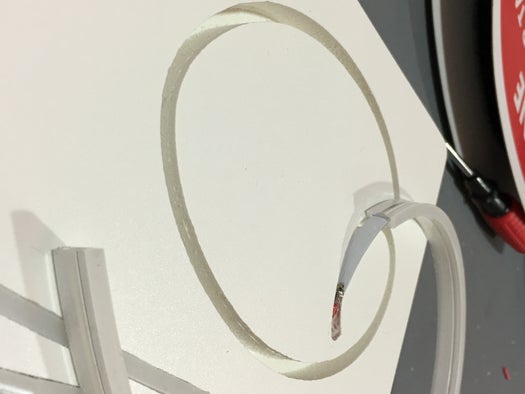
When the substrate is ready, the LED neon light sign is assembled as follows.
- A thread is used to measure the length of each portion of a letter.
- The LED neon flex light strip is cut to the same length.
- Cuts should be made at the points marked by the manufacturer to avoid damaging the lights.
- This is repeated for each letter while ensuring that the LED neon flex strip fits and illustrates the letter/shape properly.
Wiring the Sign
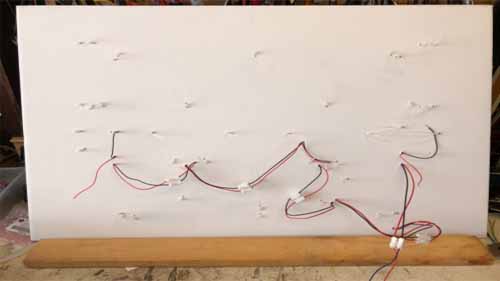
Each section of LED neon flex lights needs to be connected to the next one to create a complete circuit.
- Using a high-quality adhesive, the cut LED neon flex section is attached to the substrate.
- At the end of every cut, some connective wire remains exposed.
- A thin conductor wire is connected to it and the bond is soldered.
- The wire is guided to the back of the board through the holes drilled between letters.
- This is repeated for each section of LED neon flex lights that was cut.
- The segments of conductor wire threaded to the back are soldered together to make a complete circuit.
- The end of the circuit is connected to the power source of the LED neon flex lights.
Installation
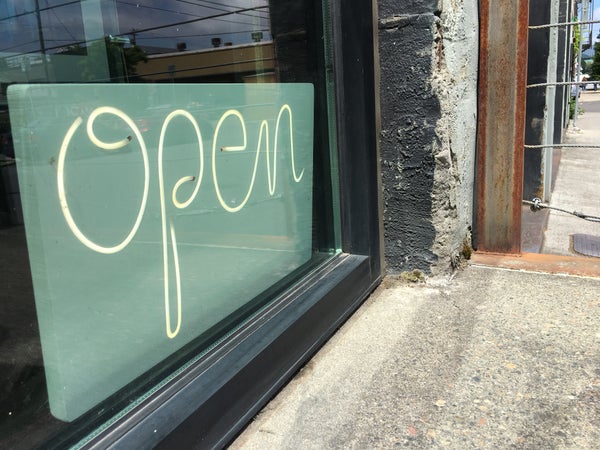
Installing an indoor sign is a straightforward process. It can be screwed on or suspended on hooks that can bear the weight. All installation should be done cautiously so as not to interfere with wiring or the LED neon flex lights.
Outdoor installations require the LED neon light sign to be wrapped in a transparent waterproof jacket. An acrylic box, for instance, would be ideal for this.
How Much Do Neon Signs Cost?

Neon signs can cost as low as $200 to thousands of dollars. This price range is due to multiple factors:
- The size of the sign
- The complexity of the design
- Additional features like waterproofing
- The sign-maker; some are more expensive than others
The intricate work that goes into making neon glass signs raises their cost of production and in turn, their price. Aside from the initial cost, maintenance can equally be quite costly. Repairing a broken glass tube, for instance, requires a fresh tube to be created from scratch. Some shops also bill more for such services as some glass tubes contain mercury which presents a health risk.
In contrast, LED neon light signs are made using affordable components such as LED neon lights and the production process is easy. Additionally, they require little maintenance as both the lights and substrates are built using durable material. However, custom LED neon light signs are more expensive than generic ready-made designs. You could, nonetheless, get around this by making your own.
Where to Buy Neon Signs
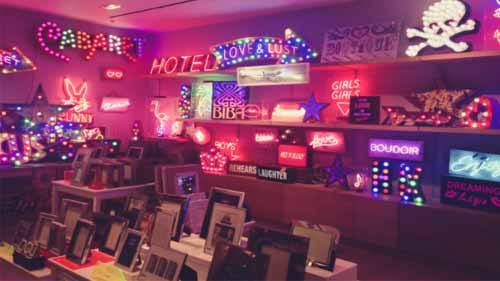
Traditional neon signs are quite fragile both structurally and in terms of safety. Making the glass tubes is an art that not just anyone can pull off. They have to be just the right size and length and filled with the right amount of inert gas or else the sign will not light up. In light of this, it is imperative that you purchase your neon sign from a certified professional neon sign maker.
On the other hand, with LED neon light signs you can choose to buy or make your own. DIY LED neon signs are an advantageous option as they are much cheaper. Buying LED neon flex lights wholesale, for example, attracts lower prices and allows you to make as many signs as you like. That said, large commercial signs may require a more skilled hand as they may be a bit more complex to make and install.
In either scenario, you can find a signmaker or buy a ready-made sign through:
Ecommerce Platforms

Platforms like Amazon, Alibaba, and Etsy among others, are a great way to find ready-made signs. Decorative designs with food, fruit, or bottle symbols are prevalent for these kinds of signs. Some also have quirky phrases or illustrations that can be used both at home or in commercial spaces.
An Online Search

Online searches are ideal for situations where you need to commission a custom neon sign. Nevertheless, the success of your search will depend on the accuracy of your description and some discernment.
Be advised that not all neon signmakers offer customization services. Additionally, there are traditional/classic neon signmakers and LED neon light signmakers. Your search terms should thus be guided by these distinctions.
When you have a list of options, compare prices against the value that each signmaker offers. Considers factors such as:
Materials used – acrylic substrate LED neon light signs, for example, may be a smidge more expensive than PVC.
Provision of an installation kit
Installation services especially for a traditional neon sign
Local Inquiries
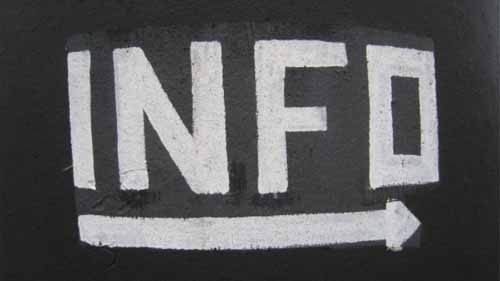
Walking into local signmakers’ workshops may sound old-fashioned in a digitized? world but it has its upsides. It gives you a chance to see their work firsthand and decide whether you like the quality of their designs. A one-on-one design process may also be more beneficial than simply going with your gut in an online transaction. In person, you can trade ideas with a designer and probably end up with a better concept.
Traditional Neon Signs Vs LED Neon Light Signs
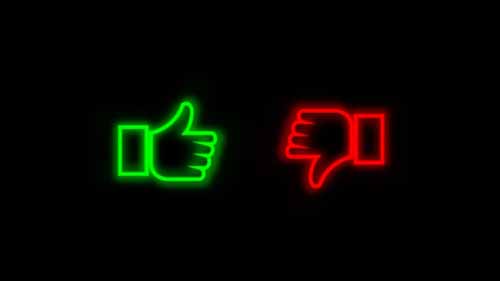
When all is said and done, your most fundamental buying decision will come down to traditional neon versus LED neon light signs. While your personal preference will play a major role in your decision, it would also be useful to consider some key facts.
Pros
The advantages of a traditional neon sign include:
- A cool vintage kind of signage
- It reaches and attracts a wide audience
- A quality sign can last as long as 8-15 years
With an LED neon light sign you benefit from:
- A radiant sign that looks just as good as a traditional neon sign
- A more affordable price
- Flexibility in that it would cope well both inside and outside
- Energy efficiency
- Better legibility as LED neon flex lights bend more easily than glass tubes
- A durability span of up to 20 years
- 16.7 million color options with a LED light controller to change them remotely
Cons
When you choose traditional neon signs you may have to face challenges such as:
- A high price
- Higher power consumption
- Relatively frequent repairs
- Inconsistent lighting if the inert gas leaks or it is unevenly spread
An LED neon sign could present some downsides too. You may have to contend with:
- High pricing of custom LED neon signs
- Illegibility if a signmaker is not keen on the bending on the LED neon flex lights
- Sign malfunctions if the power supply is overloaded or the wiring is done poorly
Conclusion
The ultimate goal here is for you to find a neon sign that you are fully content with. After all, nothing beats the joyous feeling of a satisfactory purchase. So, will be you be ordering LED neon flex lights to make your first LED neon sign or a classic retro neon sign?

